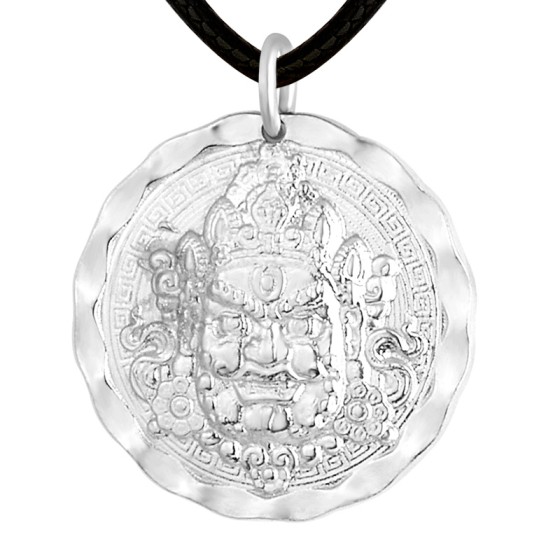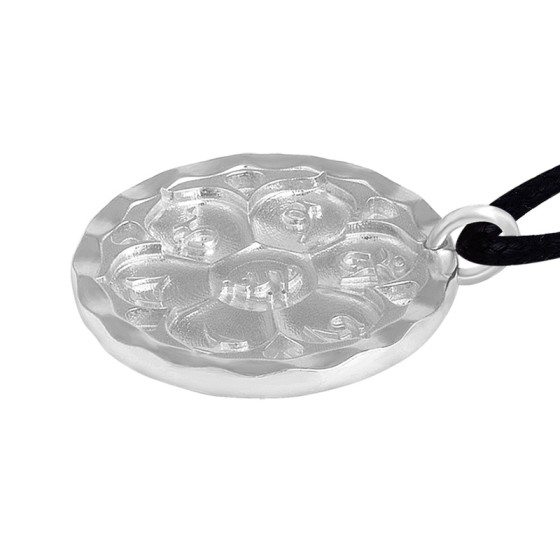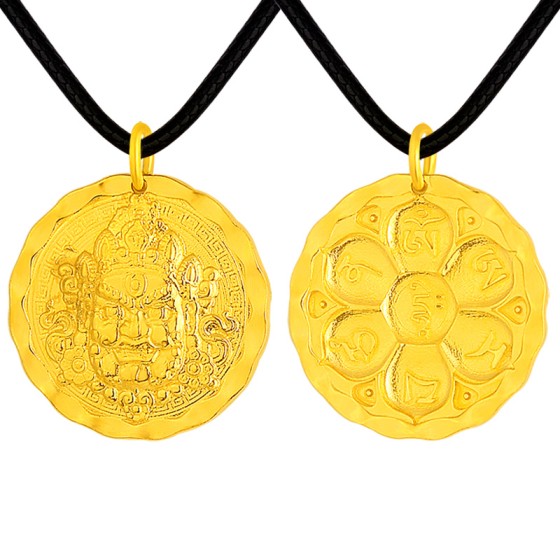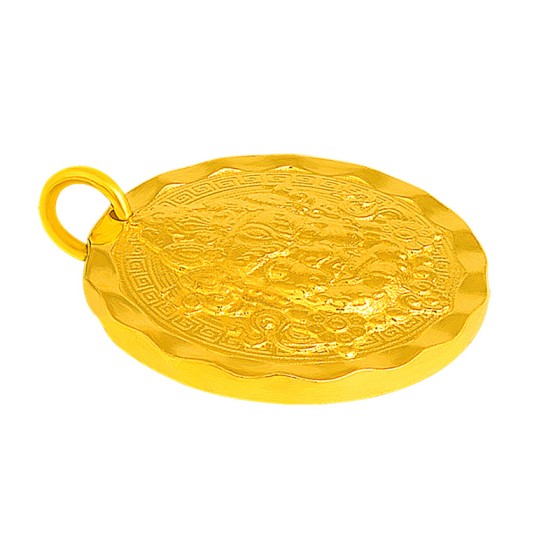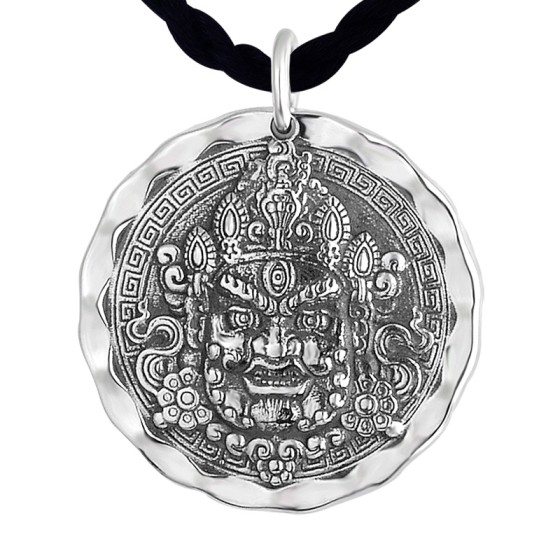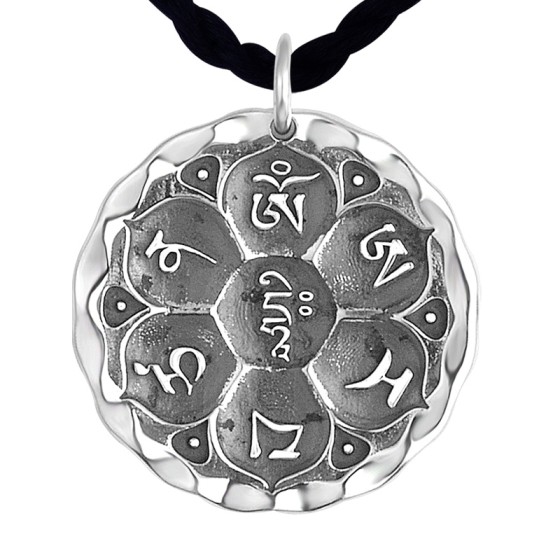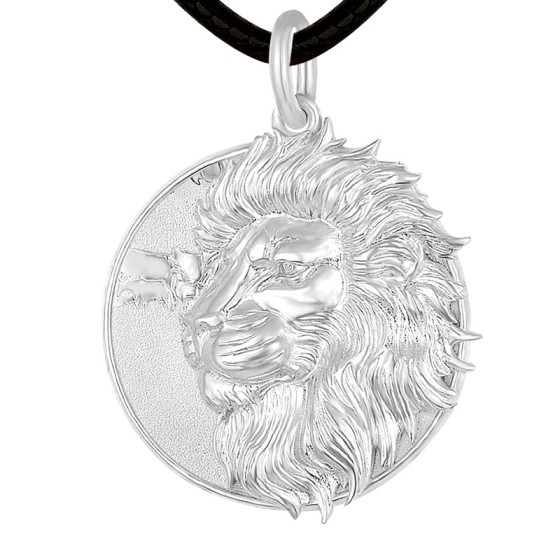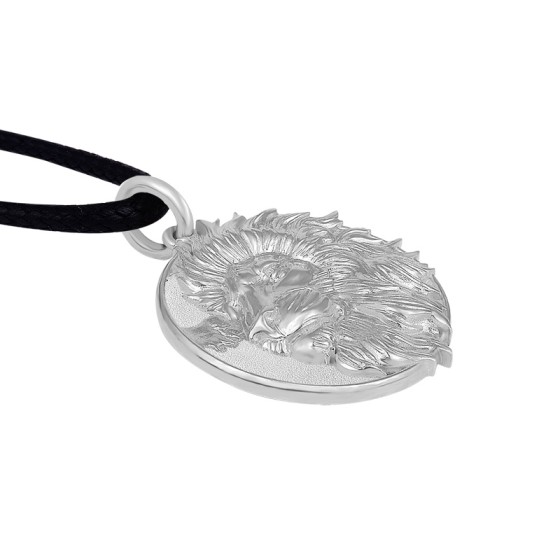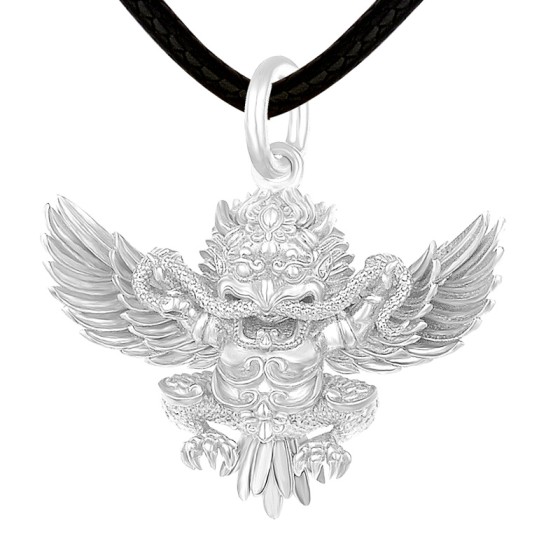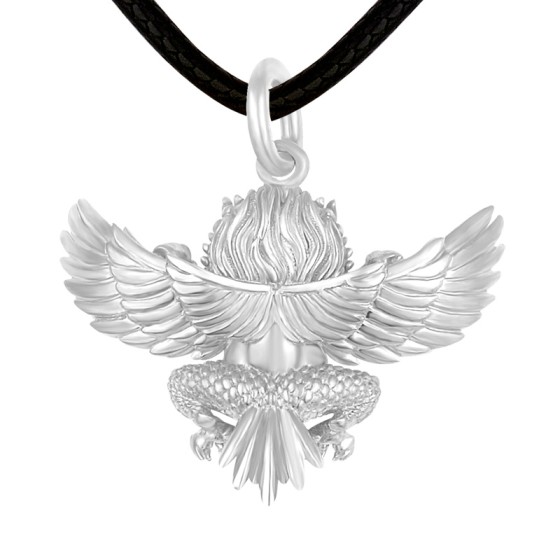48 Ancient Symbols of Good Fortune from Around the World
48 Ancient Symbols of Good Fortune from Around the World
Throughout human history, cultures across the globe have developed unique symbols associated with luck, prosperity, protection, and happiness. These ancient lucky charms not only reflect people's hopes for a better life but also reveal deep-rooted beliefs in nature, the cosmos, and spiritual forces. Below is a comprehensive list of 48 traditional good fortune symbols from different parts of the world—each still valued and used today.
1.
2. Four-Leaf Clover
Also known as Quatrefoil, the four-leaf clover consists of four overlapping circles and has been regarded as a symbol of good fortune, harmony, and protection in various cultures around the world. The symbol also resembles the ancient witch’s knot and the Celtic fivefold symbol.
3. Laima’s Sign
This Latvian symbol is a cross with curved arms, connected to Laima, the goddess of fate and wealth. It is believed to bring good fortune and protection and is often used in jewelry and traditional ornaments. Said to help align one’s destiny with positive outcomes, it is especially popular during solstice celebrations.
4. Mistletoe
Mistletoe is a small plant that grows on trees and is known for its white berries. In many cultures, it is hung in homes during winter holidays to bring good luck, love, and fertility. The tradition of kissing under mistletoe comes from ancient Norse mythology and symbolizes peace and reconciliation. Interestingly, mistletoe is also considered sacred in some Native American traditions.
5. Troll Cross
The Troll Cross is a Swedish folk charm made of bent iron shaped into a twisted oval. People once wore or hung it to ward off trolls, evil spirits, and misfortune. Its twisted shape was thought to confuse malicious beings and prevent harm.
6. Kamadhenu
In Indian mythology, Kamadhenu is a divine cow said to grant all wishes. She is often depicted as a white cow with a woman’s head and a peacock’s tail. Kamadhenu symbolizes abundance, prosperity, and the fulfillment of desires.
7. Kalpavriksha
Kalpavriksha is a wish-fulfilling tree in Hindu and Jain traditions. Believers say it grants any wish to those who approach it. This mythical tree frequently appears in art and literature, symbolizing the generosity and richness of nature. Some real trees are considered earthly representations of Kalpavriksha.
8. Japanese Crane
Cranes hold deep cultural significance in Japan, symbolizing good fortune and longevity. These elegant birds often appear in art and origami. A Japanese tradition involves folding 1,000 paper cranes to pray for good luck or wish fulfillment. Their mating habits and graceful appearance also make them symbols of loyalty and honor.
9. Matsya (Sacred Fish)
Matsya is one of the eight auspicious symbols (Astamangala) in Buddhism and Hinduism. It represents happiness, fertility, good fortune, and freedom. Fish swim in circular patterns, one following the other, symbolizing the infinite nature of the universe. In some interpretations, they also represent the sacred masculine and feminine energies. Fish are also considered lucky in Chinese, Hebrew, Egyptian, Tunisian, and Japanese cultures.
10. Bagua Mirror
The Bagua mirror is a powerful tool in Feng Shui used to deflect negative energy. Typically octagonal with a central mirror surrounded by the eight trigrams, it is believed to protect homes from harmful influences when placed correctly.
11. Yuanbao
Yuanbao refers to gold or silver ingots used as currency in ancient China. Today, they are popular symbols of wealth and prosperity. These boat-shaped ingots are often gifted during Lunar New Year and displayed in homes or businesses. They also appear as pendants or bracelets.
12. Fuzanglong (Treasure Dragon)
In Chinese mythology, Fuzanglong is one of the Five Dragon Kings, associated with hidden treasures. It is believed to guard buried wealth and bring good fortune. Small statues or images of Fuzanglong are often displayed in homes or offices to attract prosperity. The dragon is typically shown holding a pearl or treasure in its claws.
13. Omamori (Japanese Amulet)
Omamori are small, decorative amulets sold at Shinto shrines and Buddhist temples in Japan. Each contains prayers or talismans for specific purposes—health, love, success, safe travel, and more. They should be carried but not opened to preserve their power. At year’s end, many return old omamori to the shrine and receive new ones.
Other cultures also use similar protective items:
Nazar (Middle East & Mediterranean): Blue eye-shaped amulets to ward off the evil eye.
Gris-gris (West African & Voodoo): Small cloth bags filled with herbs and oils for protection, love, or luck.
Milagros (Latin America): Small metal charms pinned to religious statues or carried for blessings.
Red String Bracelet (Kabbalah, Judaism): Worn on the wrist for protection.
Chinese Lucky Coins: Often tied with red string in wallets for financial fortune.
Phra Khruang (Thailand): Sacred amulets blessed by monks for protection and good fortune.
Anting-anting (Philippines): Charms containing Latin prayers or mystical symbols.
14. Huma Bird
The Huma bird is a mythological creature in Persian folklore, similar to the phoenix. According to legend, if the shadow of the Huma falls on someone, they will gain good fortune—or even become royalty. The bird is often depicted in Persian art and literature as a symbol of heaven and spiritual ascension.
15. Daruma Doll
The Daruma doll is a Japanese lucky charm based on Bodhidharma, the founder of Zen Buddhism. Round and red with hollow eyes, you paint one eye when making a wish. When the wish comes true, you paint the second eye. The Daruma doll is also a symbol of perseverance, as it always returns upright when knocked over.
16. Ibis
In ancient Egypt, the ibis was sacred to Thoth, the god of wisdom and writing. Its crescent-shaped beak linked it to lunar cycles and time. Today, the ibis remains a symbol of knowledge and good fortune. Some believe seeing an ibis brings luck to academic or creative pursuits.
17. Nandavarta
Nandavarta is a labyrinth-like symbol in Jainism and Hinduism, representing joy and prosperity. Its intricate design is said to confuse negative energies while attracting positive ones. It is often used in rangoli (colorful floor art) during festivals, believed to bring happiness and fortune to the home. Its complexity reflects the journey of life.
It closely resembles the Hindu swastika, another symbol of good luck.
18. Srivatsa – The Endless Knot
Srivatsa, or the endless knot, is one of the eight auspicious symbols in Buddhism. Its interwoven lines represent the interconnectedness of all things and the cyclical nature of existence. As a symbol of good fortune, it is believed to bring long life and prosperity. You can find it in Buddhist art, jewelry, and architectural details.
19. Lotus (Padma)
The lotus holds deep meaning in many Asian cultures, especially in Buddhism and Hinduism. Rising from muddy waters to bloom beautifully, it symbolizes purity, enlightenment, and rebirth. As a lucky symbol, the lotus is believed to promote spiritual growth and overcome obstacles. It is commonly depicted in art, used in meditation, and appears in jewelry and home decor.
20. Conch Shell
The conch shell is considered auspicious in Hinduism and Buddhism. Its spiral shape relates to the expanding universe, and its sound is believed to dispel negative energy. In Hindu rituals, blowing the conch is said to bring good fortune and ward off evil. Symbolically, it represents the sacred sound of creation and appears frequently in religious imagery and ceremonies.
21. Dharmachakra (Wheel of Dharma)
The Dharmachakra, or Wheel of Law, is an important symbol in Buddhism and Hinduism. Its eight spokes represent the Eightfold Path of Buddhism. As a symbol of good fortune, it offers spiritual protection and guides one toward enlightenment. You’ll find it in Buddhist temples, meditation spaces, and jewelry, believed to attract positive energy and repel negativity.
22. Celtic Shield Knot
This ancient Celtic symbol consists of interwoven knots forming a shield-like shape. Traditionally used for protection, it is believed to ward off negative energy and evil spirits. As a lucky charm, it forms a protective barrier around the wearer. You’ll find it in Celtic-style jewelry, tattoos, and home decor, symbolizing strength and unity.
23. Shree Yantra
The Shree Yantra is a complex geometric diagram in Hindu tantric traditions, representing the universe and the human body. Considered one of the most powerful symbols of good fortune, it is believed to attract wealth, prosperity, and positive energy. Meditating on its intricate design is said to bring balance and harmony. Many keep a Shree Yantra at home or work to enhance success.
24. Paper Fan
In Chinese culture, the paper fan is more than just a cooling device—it is a symbol of good fortune. Its unfolding motion is seen as representing growing prosperity and opportunity. Decorative fans often feature auspicious symbols or lucky phrases. Gifting a fan is a way to wish someone a bright and prosperous future.
25. Magic Square
A magic square is a numeric arrangement where each row, column, and diagonal adds up to the same number. In various cultures, they are believed to possess mystical properties and bring good fortune. The most famous example is the Lo Shu Square from ancient China, associated with cosmic balance. Some carry small magic square charms or display them at home to harmonize energy and attract wealth.
26. Lakshmi Star
The eight-pointed Lakshmi Star is associated with the Hindu goddess of wealth and prosperity. Composed of two overlapping squares, it represents the eight powers of the goddess. Often used in Yantra designs or as decorative elements, it is believed to open pathways to success and material enjoyment. Some place it in homes or businesses to attract positive energy and financial fortune.
27. Hexagram
The hexagram, or six-pointed star, is a powerful symbol in many cultures. Known as the Star of David in Judaism and Shiv-Shakti Star in Hinduism, it is believed to provide protection and balance between the material and spiritual realms. It is also used in some magical traditions to attract positive energy. You’ll find it in jewelry, decorative art, and sacred geometry practices.
28. Hamsa Hand
The Hamsa hand is a palm-shaped amulet popular in Middle Eastern and North African cultures. Believed to ward off the evil eye and bring good fortune, it often features an eye in the center symbolizing protection. People hang Hamsa hands in homes or wear them as jewelry to invite good luck and repel negative energy. Its five fingers sometimes relate to Islamic senses or pillars.
29. Tree of Life
The Tree of Life is a universal symbol found in many cultures and religions. It represents growth, strength, and interconnectedness. Many believe placing an image or sculpture of the Tree of Life nearby attracts positive energy and encourages personal development. It is popular in jewelry, home decor, and meaningful tattoo designs.
30. Solar Cross
The Solar Cross is an ancient symbol consisting of a circle divided into four equal parts. It represents the sun, the four seasons, or cardinal directions. Associated with balance, harmony, creation, and cosmic order, it is believed to bring protection and positive energy. You’ll find it in spiritual jewelry and artwork, aligning the wearer with natural cycles and divine energy.
31. Koru
The Koru is a spiral-shaped symbol inspired by the unfurling frond of a fern in Māori culture of New Zealand. It represents new life, growth, strength, and peace. As a symbol of good fortune, it brings positive change and fresh beginnings. Commonly worn as jewelry or used in art and tattoos, its continuous spiral represents life’s cycle and staying connected to one’s roots.
32. Rudraksha Beads
These naturally occurring seeds come from the Rudraksha tree and are considered sacred in Hinduism. Believed to be tears of Lord Shiva, they are said to bring peace, prosperity, and spiritual awakening. Wearing a Rudraksha mala (necklace) is believed to reduce stress and attract positive energy. Different types of Rudraksha beads, distinguished by the number of faces, correspond to various benefits and planetary influences.
33. Witch’s Knot
Also known as the Witch’s Charm, the Witch’s Knot is a protective symbol used in various magical traditions. Its intricate, interwoven design is believed to trap negative energy and deflect curses. As a lucky charm, it wards off misfortune. You may see it carved on doors, used in jewelry, or drawn as part of a spell. Some visualize drawing the knot as a protective exercise.
34. Brigid’s Cross
This Irish symbol is associated with Saint Brigid and the pre-Christian goddess Brigid. Traditionally made from reeds or straw, it was believed to protect homes from fire and evil. As a lucky charm, it brought blessings of poetry, healing, and blacksmithing. Many Irish families make new crosses every February 1st (St. Brigid’s Day), hanging them by doorways or beams for annual protection.
35. Ladybird (Ladybug)
Ladybirds are considered lucky in many cultures around the world. Their bright colors and spots symbolize joy and good fortune. In some traditions, the number of spots indicates how many months of good luck you will have. Finding a ladybird or having one land on you is usually seen as a sign of good news or wish fulfillment.
36. Fu Lu Shou
In Chinese culture, Fu Lu Shou represent the three gods of happiness, fortune, and longevity. Depicted as wise elders, they symbolize good fortune in different aspects of life: Fu brings blessings, Lu brings career success and wealth, and Shou grants health and long life. Displaying small statues or images of Fu Lu Shou in homes or businesses is believed to bring all-around prosperity.
37. Acorn
In many cultures, acorns symbolize potential and good fortune. As the seed of a mighty oak, it represents strength, endurance, and future prosperity. In Nordic traditions, the acorn is linked to Thor, the god of thunder, and is believed to protect homes from lightning strikes. Today, some carry acorns as small lucky charms, especially in financial matters or at the start of new ventures.
38. Elephant with Upturned Trunk
An elephant with its trunk raised is a powerful symbol of good fortune, especially in Feng Shui. Placing an elephant statue with its trunk up near the entrance of a home or office is believed to bring good luck and block negative energy. It is also seen as a symbol of strong memory and intelligence.
39. Four-Leaf Clover
Perhaps the most well-known lucky symbol, the four-leaf clover is a rare variation of the common three-leaf clover. Each leaf represents something: faith, hope, love, and luck. Finding a four-leaf clover is seen as a sign that good fortune is coming. In Celtic tradition, it was believed to allow one to see fairies. Today, the symbol is widely used in jewelry, clothing, and decorations as a charm.
40. Peacock Feather
Peacock feathers have varied meanings across cultures. In many Eastern traditions, they symbolize beauty, integrity, and protection. The "eyes" on the feather are believed to ward off evil. In Hinduism, peacock feathers are associated with Lord Krishna and considered auspicious. They are often used in home décor or as personal charms for those who believe in their positive energy.
41. Solomon’s Knot
Also known as the Infinite Knot, Solomon’s Knot is an ancient symbol found in various cultures. Its interwoven design, with no beginning or end, represents eternity and connection. As a symbol of good fortune, it is believed to bring wisdom, like King Solomon in the Bible. The knot is said to prevent evil and attract positive energy. You’ll find it in decorative arts, jewelry, and even religious settings, symbolizing the eternal soul or divine love.
42. Kaheksakand – Estonian Eight-Pointed Star
Kaheksakand, also known as Auseklis in Latvia, is a powerful ancient Baltic symbol of wealth and protection. Deeply rooted in Estonian and Latvian folklore and mythology, it represents the morning star or Venus, symbolizing rebirth and light overcoming darkness. In pagan traditions, Kaheksakand is associated with Austras koks, the cosmic tree connecting worlds. Today, many Estonians and Latvians wear or display this symbol not only for good fortune but also to connect with their heritage and ancestral wisdom.
43. Diya (Oil Lamp)
Diya is a small clay oil lamp used in Hindu rituals and festivals. Lighting a Diya is believed to ward off negative energy and bring prosperity and divine blessings. These lamps are especially prominent during Diwali, symbolizing the triumph of light over darkness and good over evil.
44. Pomander
A pomander is an orange studded with cloves, used as a natural air freshener and decoration. In some traditions, hanging a pomander in the home is believed to bring good fortune and ward off illness.
45. Ganesh (Elephant-Headed Deity)
Ganesh is the elephant-headed Hindu deity known as the remover of obstacles and guardian of arts and sciences. Statues or images of Ganesh are often placed at the entrances of homes and businesses to invite good fortune and ensure success in new endeavors.
46. Amaltas Flower
Amaltas, also known as the Golden Rain Tree, is considered auspicious in Indian tradition. Its vibrant yellow flowers symbolize prosperity and positive energy. Many believe displaying these flowers at home brings good fortune and success. The tree’s stunning bloom is seen as a natural expression of abundance and joy.
47. Kanatitsa
Kanatitsa is an ancient Bulgarian symbol composed of triangles. It is believed to protect the home, bringing love, harmony, good fortune, and peace. It is often worn to support happy marriages and strengthen family bonds.
48. Mandala
Mandala is a circular geometric design rooted in Hindu and Buddhist traditions. Used both decoratively and spiritually, it is believed to bring good fortune and support personal growth. Representing wholeness and the cycle of life, it is revered globally as a symbol of transformation and good luck.
These ancient symbols connect us to the wisdom of our ancestors and the flow of positive energy in the universe. If any of these resonate with you, consider incorporating them into your daily life as personal lucky charms. You can carry them, wear them as jewelry, or meditate with them. May good fortune follow you wherever you go.
